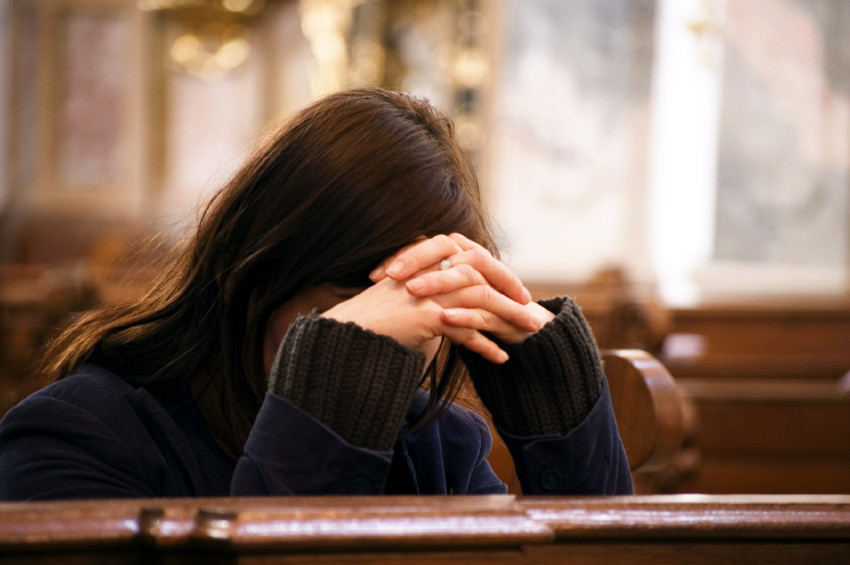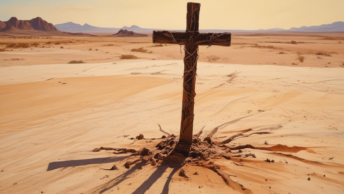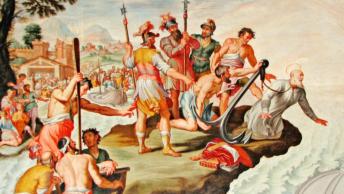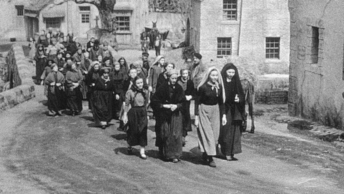“It is he who shall build a house for my name; he shall be a son to me, and I will be a father to him, and I will establish the throne of his kingship over Israel forever.” ( 1 Chronicles 22.10)
The Holy Temple being a place of unity, an intersection between the divine and the human, plays a crucial role in Jewish tradition. The first two Holy Temples of Jerusalem were constructed on the city’s Temple Mount centuries ago but were destroyed by the Babylonians and the Romans respectively. The Herodian Temple was not only the focus of religious ritual but also the repository of the Holy Scriptures and the meeting place of the Sanhedrin. Some Jewish people still recall with unmistakable reverence the temple of Jerusalem into which their ancestors put a lot of effort to build it. There remains a significant stream within Orthodox Judaism that aspires to rebuild the Temple and to return to an era when Jews worshipped through pilgrimage and sacrifices.
Devout Jews went to synagogues, and there were no churches in Israel at that time. The New Testament records more than 10 occasions on which the ministry of Jesus took place in the synagogue. “Jesus went around to all the towns and villages, teaching in their synagogues, proclaiming the gospel of the kingdom, and curing every disease and illness.” (Matthew 9.35) As a boy of twelve Jesus decides to remain in the Temple instead of accompanying Mary and Joseph on the way to Nazareth (Luke 2: 41-52). One Saturday Jesus visits the synagogue in Nazareth and after reading the prophet Isaiah he begins to teach the Jews (Luke 4:16-32). Another time Jesus enters the Temple and drives out the money changers and the sellers of animals (John 2:13-16). Thus, it can be assumed that Jesus as a grown man spent a lot of time in the Temple.
In 1 Kings 8.6, 21 we read that the Ark of the Covenant was placed below the wings of two large cherubim that stood inside the Holy of Holies of Solomon’s Temple. One may say that the Ark was a foreshadowing of the tabernacle – the golden box behind the altar where the consecrated Host is kept. For Catholics the living God dwells amongst his people in the Tabernacle. This clearly distinguishes Catholic churches from Protestant ones.
A church as an ecclesiastical building does carry deep spiritual meaning. This is the special place where man encounters God, and in this way it fundamentally differs from other socially useful structures: hospitals, schools, theaters or pools. There exists a special triad – the mystical relationship between Jesus and a priest, Jesus and the faithful, a priest and the faithful. It is here that the bread and wine are transformed into the Body and Blood of Jesus Christ by the power of the Holy Spirit. The Eucharist is “the source and summit of Christian life” (the CCC 1324). The Church edifice is the sacred building where Christians assemble to pray together and where the sacraments are celebrated.
Not infrequently, many Catholics meet reproach from the enemies of the Church claiming that instead of spending time in a church they could pray at home or in a forest. I was once asked by a Polish-Australian who had been raised in the Catholic Church and later in his life embraced Buddhism whether I could say a Mass at my place. How much to lay out on erecting a church is a vexed issue. Quite often they simply cannot bear the fact that so much money is lavished on edifices devoted to somebody, they believe “just does not exist”, arguing that religion is a man-made illusion to maintain social and political control. Moreover they usually want transparency from parish priests but privacy for wealthiest individuals in the world, like Bill Gates, Jeff Bezos, Mark Zuckerberg, ect. The situation is much worse when Christians have to suffer or make a sacrifice of their lives so that they could build a chapel or a church.
In the late 1940s a town of Nowa Huta had originally intended to be a benchmark for other communist cities founded across Poland and provide a counterweight to bourgeois and reactive Kraków. Therefore, from the very beginning, the presence of a church was out of the question. The communist regime desired to build a huge Iron & Steel Company strategically located near the Vistula River. The process of “thaw”, developing in Poland after the death of Joseph Stalin, for a long time did not include the aspect of religious freedom. Even the changes of October 1956, the return of the Primate Cardinal Wyszyński to Warsaw and the reinstatement of religious education in schools, did not allow to meet the basic need of local residents to be met.
After ten years of constant efforts, they managed to get authorization, and soon a symbolic cross was erected and blessed by Archbishop Eugeniusz Baziak where a church was to be built. However, quite unexpectedly the authorities revoked it, pocketed the money that had been collected by the faithful and ordered to remove the cross. No wonder, one woeful day of April 1960, great anger was unleashed among the people who began to grow in numbers praying and chanting religious hymns, later that day they were joined by steel mill workers coming back home. To disperse the crowd the police used firearms, truncheons and dogs. Officially, as a result of violent riots that broke out on the streets of Nowa Huta throughout the night, six people were hospitalized due to gunshot wounds, dozens sustained deep cuts and severe abrasions. Over 500 people were arrested, many of whom received a sentence from six months to even five years of imprisonment. It was not until the last two months of 1967 that Bishop of Kraków, Karol Wojtyła started the dig for the foundations of a new church in Nowa Huta.
Despite the pandemic, Poland is bucking the trend of Europe where a fair share of new churches, is currently being built that counteracts France, Belgium, Germany and Britain where there is an increasing number of mosques, while existing places of Christian worship are either converted into restaurants, museums or just demolished. It reminds one vividly of the darkest years in the Soviet Union with its blatant disregard for sanctity. Suffice it to say that Dominus Flevit. Quo vadis Europa.
“Currently the building process takes place in a different way than it used to. It should be stressed that the grassroot initiative of parishioners, their energy and the means play the key role in putting up a church. Making project implementation plans takes three or four years, and in that period of time building funds are collected. Reaching the shell and core shape is usually completed within one or two years depending on the project, meanwhile the fit-out works can even take a dozen or so years. Following the completion of work is the consecration of the church by a bishop.” – said Director for Administration and Construction of Churches of the Archdiocese of Warsaw, Fr. Sławomir Nowakowski.
“Money for the building of a church mainly comes from the church collection, occasionally from donations, and from construction companies which for some time decide to provide funds. Usually if someone wants first to raise building funds never builds a church. Its very building is something of a miracle.”- stated Archbishop Stanisław Gądecki
The Basilica of Our Lady of Lichen is an example of an exceptional expression of faith and love in God. Although the whole enterprise was extremely expensive, about 200 million Polish zloty, it came into being mainly through millions of donations from Poland and abroad. Using the proverbial “widow’s mite” a masterpiece of contemporary church architecture, partly modeled on St. Peter`s basilica, was created. As early as at the end of the 1980s, a group of Polish-Australians made a donation for this purpose.
In 1994 as soon as all needed documents had been completed, hundreds of workers set to raise the basilica. The builders can take pride in its remarkable capacity of 300,000 cubic meters with space for about 20,000 worshipers. There are six huge staircases, five passenger lifts and a moving ramp for the disabled. A 141.5 meter high church tower rises majestically to the sky. Four colossal bells hang there; the largest one, named “Mary” made by an Italian bell foundry, weights over 14 tons. A golden cross and a golden crown at 103,5 meters above ground level surmount a grand 25 meters-in-diameter dome that in itself is a real land mark for arriving pilgrims.
On June 6, 1999, Pope St. John Paul II came to bless the basilica and celebrate a Mass for over one million pilgrims. “Let us give thanks to God for this church! Gratitude is due also to the guardians of this Shrine, the Marian Fathers who for years have taken care of it and have faithfully served the pilgrims. In fact, it is their initiative that led to the building of this church. I thank also those who built it and all who, with their offerings, have supported and continue to support this important undertaking,” said the Pope. The National Conference of Bishops recognized it as the votive offering of the Polish Church for Great Jubilee of 2000 years of Christianity. After 10 years of construction, on June 12, 2004, the Apostolic Nuncio to Poland, Archbishop Jozef Kowalczyk, consecrated the new Shrine of Our Lady of Lichen.
This splendid monument fascinates all newcomers, and it is estimated to be the highest and the largest church ever erected in Poland. It can only be overshadowed in size by seven Christian temples in Europe and eleven throughout the world.
In an age when many are leaving the Church, the building of new churches is a reminder of a God who “makes all things new” (Rev 21:5). Sacred architecture is the edifice meant to honor God and serve his people. Because funding is becoming more and more scarce, a community of strong faith seems, paradoxically, the sine qua non of erecting a sacred building, only then does God can work a miracle. “Unless the LORD build the house, they labor in vain who build” (Psalm 127). To pray for a new place of worship is finally, to take up the task of converting oneself to the Lord, who constantly calls us to follow him “more closely”, to become the humble instrument in God’s hands. The truth is that without churches, where the Sacrifice of the Mass can be worthily celebrated and the Consecrated Hosts be safely kept in the Tabernacle, God will no longer dwell in the midst of men. In that case, though it sounds ominous, it may also signify that the whole mankind need not to be kept alive anymore.








